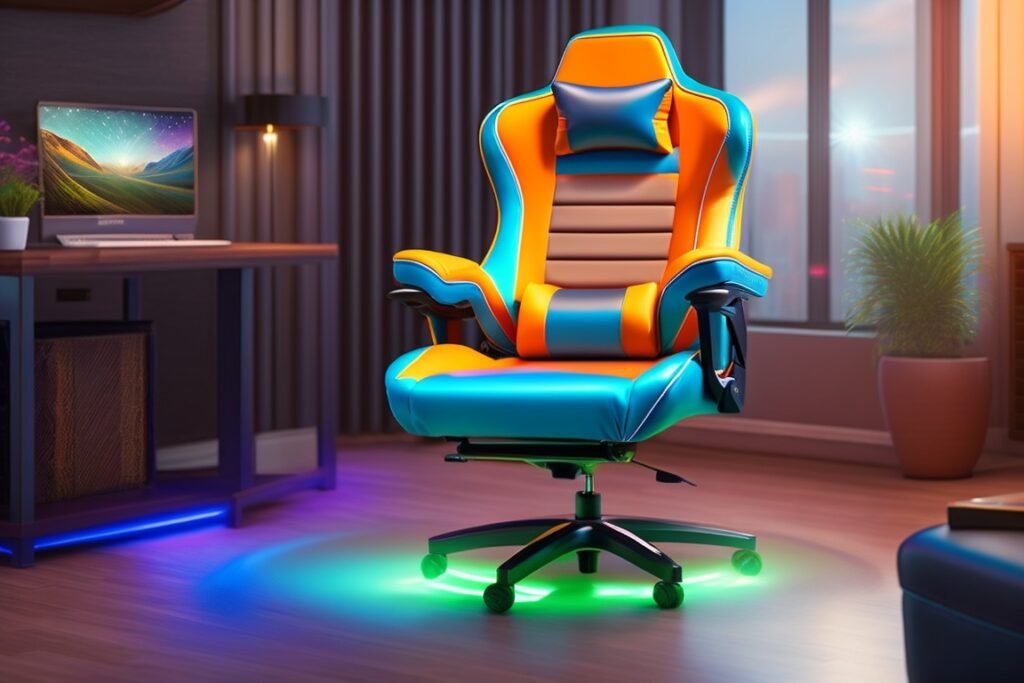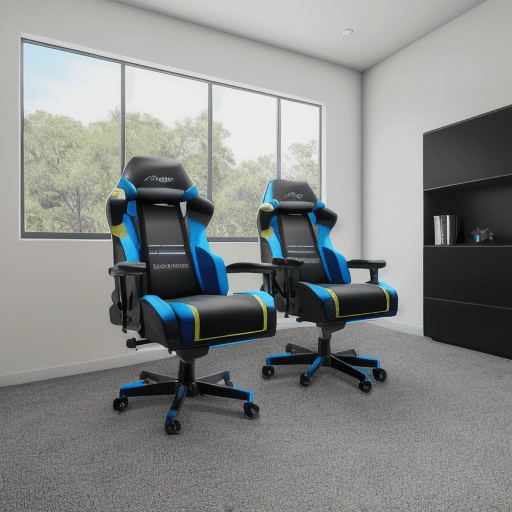Weather conditions vary greatly depending on location and season. In order to provide comfort in these changing environments, HVAC systems are essential for delivering cooling and heating options that can be tailored according to individual needs.

This article will explore the different types of air conditioning units available as well as how they can best serve a variety of weather conditions. Furthermore, it will investigate the pros and cons of each option so readers can select an appropriate system for their environment.
Central Air Conditioners
Central air conditioners are the best choice when it comes to cooling large spaces such as homes and businesses. They offer superior energy efficiency compared to smaller units, making them an ideal option for both residential and commercial settings. Installation costs can be significant depending on the size of the unit needed, however with proper maintenance these systems will provide years of reliable service.
The most important factor in choosing a central air conditioning system is selecting one that is correctly sized for your space. Air conditioners should not be oversized or undersized, but instead must be tailored to meet your specific needs. An HVAC expert can help you determine the right model and size for your home or business environment as well as advise on how best to install the system efficiently.
In addition to providing optimal comfort levels during hot weather conditions, central air conditioners also offer efficient filtration capabilities that reduce pollutants inside the building while controlling humidity levels at acceptable levels. This helps maintain healthy indoor air quality throughout summer months.
With careful consideration of all factors involved, investing in a central air conditioning system can be beneficial in terms of cost savings over time and improved comfort level year-round. Moving forward into window air conditioner options may further optimize these benefits even more.
Window Air Conditioners
Window air conditioners are a popular choice amongst homeowners, as they offer an effective and efficient way to cool individual rooms. According to the Department of Energy, nearly 8 million window air conditioning units were sold in 2018 alone.
This type of cooling system is relatively inexpensive compared to other options, with installation costs ranging from $150-$500 depending on size and features. Additionally, many window ACs boast high energy efficiency ratings that can help reduce electricity bills over time.
When shopping for a window air conditioner, it’s important to consider the size of your space and the climate you live in. Models come in various sizes and capacities that range from 5,000 BTUs (British Thermal Unit) up to 28,000 BTUs or more—it’s best to consult a qualified HVAC technician who can recommend the right unit for your needs.
In terms of placement within the room itself, most models should be installed near windows so exhaust tubes can direct hot air outside while keeping cold air inside at all times.
For those looking for even greater control over their home’s temperature levels without needing multiple window units throughout each room, ductless mini-split systems may be worth exploring.
Ductless Mini-Split Systems
Ductless mini-split systems are a popular heating and cooling option for homes or businesses that don’t have access to traditional ductwork. They offer several advantages over other types of HVAC systems, including:
- Energy efficiency: Ductless mini-splits can be up to 40% more energy efficient than central air conditioning units due to their ability to cool or heat individual rooms instead of the entire house at once.
- Installation cost: Installing a ductless mini-split system is much less expensive than installing a new furnace and air conditioner since it requires no additional ductwork.
- Flexibility: With multiple indoor units connected to one outdoor unit, you can control each room’s temperature independently, making them ideal for multi-story buildings where different floors need different temperatures throughout the day.
Overall, ductless mini-splits provide an affordable and energy efficient alternative for those looking for an easy way to regulate the temperature in their home or business without having to install extensive ductwork first.
From convenience and flexibility all the way down to installation costs and energy savings, they make a great choice for anyone looking for a reliable cooling solution with minimal hassle.
This makes them perfect stepping stone into exploring even more advanced technology such as heat pumps which we will explore next…
Heat Pumps
Heat pumps are a type of HVAC unit that can be used to both heat and cool the air in a space.
The technology works by absorbing heat from one area, such as outside air, and transferring it into another for heating or cooling purposes.
Heat pumps offer energy efficiency compared to traditional methods like furnaces as they require less electricity to run because they do not need to generate their own heat.
In addition, this technology is also able to absorb more heat than it consumes during operation, making them even more efficient at warming up an interior environment.
The installation process of a heat pump usually involves connecting the outdoor unit with an indoor evaporator coil using refrigerant lines.
This requires professional knowledge and skill in order to ensure safety, since these systems contain pressurized gas and electrical components.
Additionally, there are various features available when purchasing a heat pump system, such as different fan speeds and humidifiers for enhanced home comfort.
Heat pumps have become increasingly popular over the years due to their convenience and cost savings potential; however, careful consideration should be made before selecting one as some climates may not be suitable for this kind of HVAC system due to lower temperatures or extreme weather conditions.
With proper maintenance, though, homeowners can enjoy reliable performance with significant long-term benefits.

Transitioning now into discussing gas furnaces…
Gas Furnaces
Gas furnaces offer a reliable and efficient way to heat up your home, providing an optimal balance between the upfront installation cost and long-term energy efficiency. As such, they have become the go-to choice for many HVAC experts when it comes to keeping their clients comfortable in any weather condition.
Like a beacon of warmth, gas furnaces can light up any room with little effort. The installation is quite straightforward compared to other heating options available on the market – you need only access to natural gas or propane lines and a correctly sized furnace unit tailored to fit your specific needs.
These units also tend to be more affordable than electric furnaces as far as upfront costs are concerned, making them ideal for individuals looking to avoid significant expenses during their initial setup phase. In terms of overall performance, most modern models come equipped with several impressive features that ensure consistent airflow throughout your entire house while using minimal amounts of energy.
A well-maintained system should last anywhere from 15-20 years depending on how much wear and tear it has been subjected too over time. Thus transitioning into the subsequent section about electric furnaces with ease, we see why this type of equipment remains one of the most popular choices among homeowners for its durability and energy efficiency benefits.
Electric Furnaces
Electric furnaces are an increasingly popular type of heating system that can provide efficient and reliable warmth in residential homes. They use electricity as their power source, which means they generate no emissions or require a venting system like other types of home heating equipment.
Electric furnaces also have the advantage of being relatively quiet compared to other models, making them ideal for certain settings.
The installation cost of electric furnace is typically lower than most gas and oil systems due to its simplicity; however this does not mean it is necessarily cheaper long-term. The energy efficiency ratings of electric furnaces tend to be lower than some more efficient gas and oil furnace options, so depending on your climate zone and usage needs, you may save money with a different model.
It’s important to consider all factors before investing in any type of heating unit.
When selecting an electric furnace for your home, look for one with adjustable speed motors — these will allow you to adjust the fan speed based on how much heat is needed in order to maximize efficiency over time.
Also check if the manufacturer offers special deals or rebates that can help make purchasing an electric furnace even more affordable.
From there, discuss sizing requirements with your HVAC contractor to ensure proper selection for optimal performance year round.
Boilers
Electric furnaces have long been a reliable source of heat for many homes in all kinds of climates. But now, boilers are gaining popularity as an efficient and cost-effective way to provide warmth during the cold winter months. Boilers offer homeowners with unique advantages that make them desirable alternatives to electric furnaces or traditional heating systems.
When it comes to boiler maintenance, there are several factors that must be taken into consideration. Regular inspections should be done by a certified HVAC technician, who can look for signs of wear and tear on components such as pipes, valves and filters.
It is also important to keep up with regular cleaning practices like removing lint from inside the unit or replacing parts when necessary. The more diligent you are about maintaining your boiler system, the better efficiency you will experience – both financially and thermally speaking!
In addition to its low maintenance requirements, boilers offer energy savings due to their high level of efficiency compared to other types of heating systems. This translates directly into lower monthly bills because less fuel is needed to produce the same amount of heat generated by electric furnaces or radiators.
Boiler units come in different sizes and models so they can easily fit any space, making them an ideal choice for those looking for a simple yet effective solution for warming their home without breaking the bank.
Radiators
Radiators are an effective and efficient way of providing heating solutions in the home. They provide a reliable source of heat, often able to be used with different fuel sources such as natural gas, oil or electricity.
Radiators can also aid with cooling during warm summer months by creating convection currents that move hot air away from living spaces. This is especially beneficial when combined with zone control systems that allow for individualized temperature control within each room.
Radiant heating using radiators offers several advantages over traditional forced-air systems due to its ability to evenly distribute heat throughout a space without relying on ducts or fans to circulate air. Additionally, it reduces energy costs by not having to operate motorized components while still maintaining comfortable temperatures within the home.
Furthermore, radiators have a low upfront cost compared to other types of heating units since they don’t require complex installation processes or specialized tools and materials.
When utilizing radiators as part of your HVAC system, it is important to consider their size and placement in order to maximize comfort levels and efficiency. It should also be noted that some models create noise which may need to be taken into account before deciding whether this type of solution fits your needs best.
Ultimately, radiant heating provides numerous benefits including cost savings and ease of use making them ideal for homes looking for reliable climate control options year round.

Frequently Asked Questions
What Is The Most Cost-Effective Way To Heat And Cool My Home?
The most cost-effective way to heat and cool a home is by utilizing smart thermostats and geothermal systems.
Smart thermostats are designed to learn and adapt based on the user’s preferences, ensuring that every room in the house maintains an optimal temperature throughout the year.
Geothermal systems rely on energy from below ground level which is then transferred into the house, creating more efficient heating and cooling than traditional air conditioning units.
With both of these methods working together, homeowners can enjoy consistent temperatures while saving money over time.
Is It Possible To Install A Cooling And Heating System Myself?
DIY installation of a cooling and heating system is becoming an increasingly popular option to save money on energy costs.
However, it is important for individuals looking into this option to understand the risks involved in terms of environmental impacts.
Properly installed systems are essential to ensuring optimal efficiency, as well as avoiding potential damage caused by incorrect installation.
Professional HVAC technicians can provide comprehensive tips on DIY installations while also offering advice on how to ensure your home remains comfortable throughout different weather conditions without compromising safety or damaging the environment.
Are There Any Government Incentives Available For Installing Energy-Efficient Cooling And Heating Systems?
The government offers a range of incentives for those who install energy-efficient cooling and heating systems, allowing them to benefit from cutting their energy costs.
These fiscal benefits are like manna from heaven for hvac experts looking to provide climate control without breaking the bank.
From grants to tax credits, there is an array of options that can be tailored to fit any budget while still providing excellent energy saving tips.
With these incentives in place, one can enjoy the perfect temperature all year round with minimal effort and maximum efficiency.
What Are The Long-Term Maintenance Costs Associated With Each Type Of System?
The long-term maintenance costs associated with cooling and heating systems vary depending on the type of system, as well as its environmental impact.
For instance, energy efficiency is an important factor in determining both the cost of operation and the overall environmental footprint.
Systems that are more efficient may require fewer repairs over time and have lower operating costs.
In addition, there are also hidden costs to consider such as air filtration replacement filters or other components that may need replacing throughout the life of a system.
It is essential for homeowners to do their research when considering different types of HVAC systems so they can make an informed decision based on both initial installation costs and ongoing maintenance expenses.
What Is The Most Energy-Efficient Way To Maintain A Comfortable Temperature In My Home?
The most energy-efficient way to maintain a comfortable temperature in one’s home is by using alternative sources of heating and cooling, such as solar panels or geothermal power.
These systems are designed to draw from renewable resources for the majority of their energy needs, resulting in a lower carbon footprint than traditional gas furnaces and air conditioning units.
Installing these systems can also result in long-term cost savings due to reduced energy bills.
For those looking to reduce their environmental impact while staying comfortable indoors, investing in an alternative source of heating and cooling is a great solution.
Conclusion
When considering the best cooling and heating options for different weather conditions, it is important to factor in both cost and energy efficiency. Investing in a more efficient system can save money over time due to lower maintenance costs.
Furthermore, government incentives may be available that could further reduce the initial installation cost of an energy-efficient system.
While there are many benefits associated with investing in an energy-efficient system, some may worry about the complexity of installation. However, modern systems have been designed with this in mind; they are easy to install and maintain even without any technical knowledge or experience.
By taking advantage of these technologies, homeowners can enjoy greater comfort while remaining mindful of their budgets and environmental impact.

Sha Neumeister, the visionary behind SomosVisibl.com, is a connoisseur of gaming chairs that prioritize both style and comfort. With an unparalleled understanding of ergonomics and a passion for enhancing the gaming experience, Sha curates a collection of gaming chairs that offer impeccable support and aesthetic appeal. Elevate your gaming setup with Sha’s handpicked selection of gaming chairs, designed to keep you comfortable and immersed in your virtual adventures.








